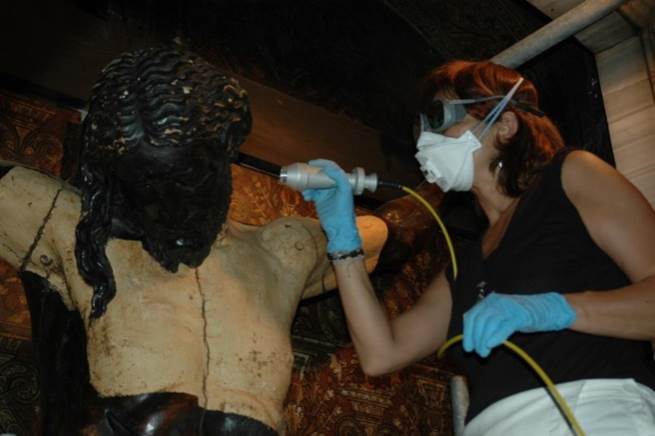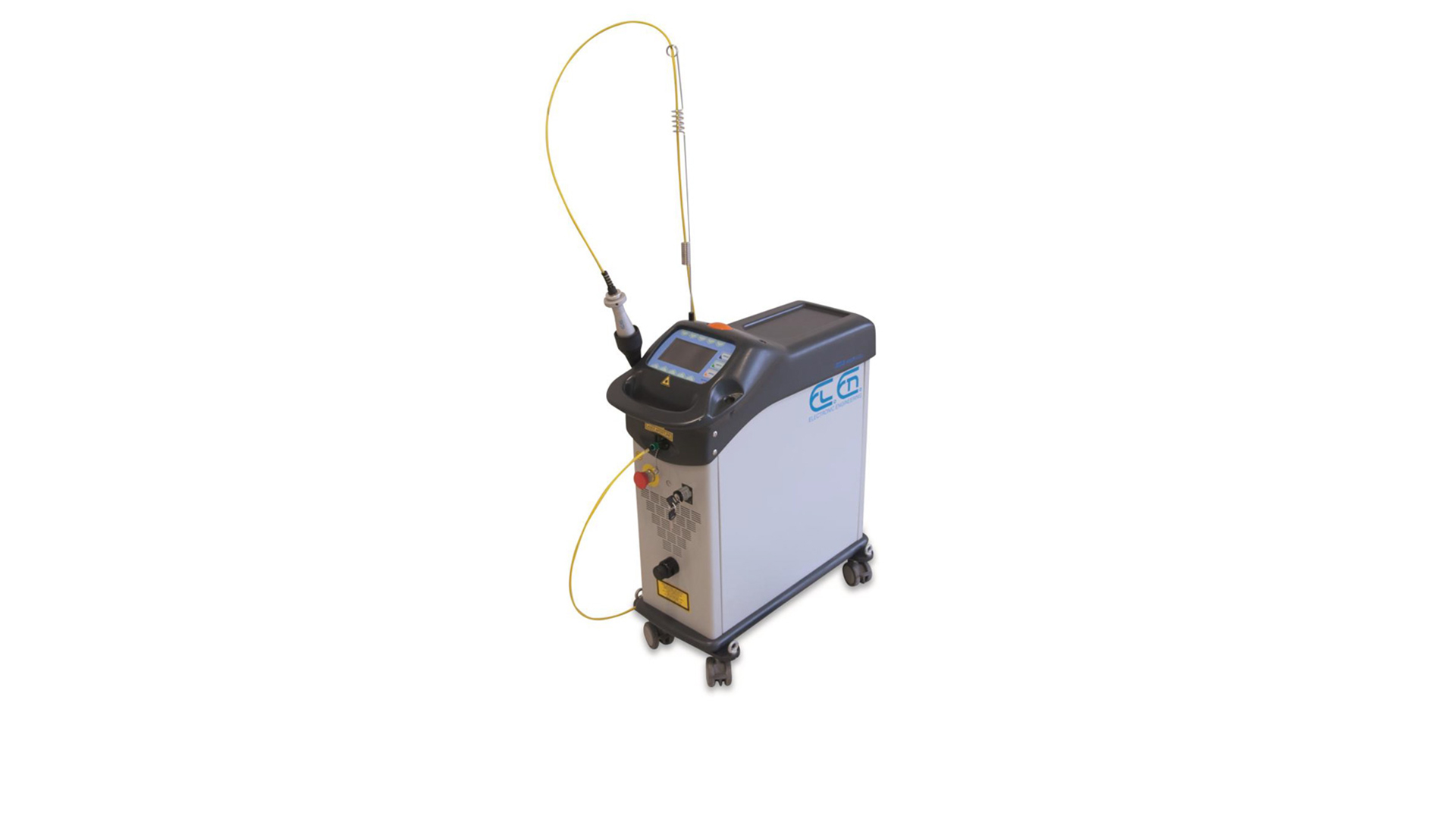The wooden Crucifix in the Church of Santa Maria dell’Anima in Rome was created by Giovanni Battista Montano in 1584. The restoration was carried out on site, avoiding the removal of the work from its location, so as not to alter the delicate balance of the anchoring system to the wall behind.

THE RESTORATION OF THE WOODEN CRUCIFIX OF
S. MARIA DELL'ANIMA AND
THE REDISCOVERY OF ORIGINAL POLYCHROMY
THE WORK
THE PROBLEMS OF RESTORATION
The sculpture presented a conspicuously compromised conservative state, evidenced by an anomalous “bubble-like” raising of the pictorial film. The damage, probably determined by the proximity to an anomalous heat source, had led to the formation of bubbles concentrated along the vertical axis, some of which, due to the progressive loss of adhesion of the layers of the underlying preparation, had imploded, assuming the appearance of micro craters. The microscopic observation of the margins of these small cavities, subsequently supported by stratigraphic investigations, had shown the irrefutable presence of an original polychromy placed below the consistent bituminous patina that gave the wooden sculpture the appearance of a bronze work. This patina of difficult dating is probably linked to a change in taste and is, as assumed from the stratigraphic analysis, contemporary to the last gilding of the loincloth.
THE LASER
The traditional cleaning techniques were found to be seldom selective and the liftings, softening in contact with the solvents, risked breaking up. The laser cleaning has allowed the removal of the overlayers, respecting the integrity of the original surface, without exerting mechanical actions and damaging frictions given the precariousness of the conservative state. A uniform level of cleaning was achieved even in the most inaccessible and delicate areas. The used device has a pulse length of 100 ns which was fundamental to optimize the result. A longer pulse would have entailed thermal risks to the original pigment, too short pulses (QS) would have compromised the fragility of the pictorial film.
Commission for the Historical, Artistic and Ethno-anthropological Heritage and Museum Center of the city of Rome.
Restorers: Daniela Storti, Valeria Merlini, Mariarosaria Di Napoli
